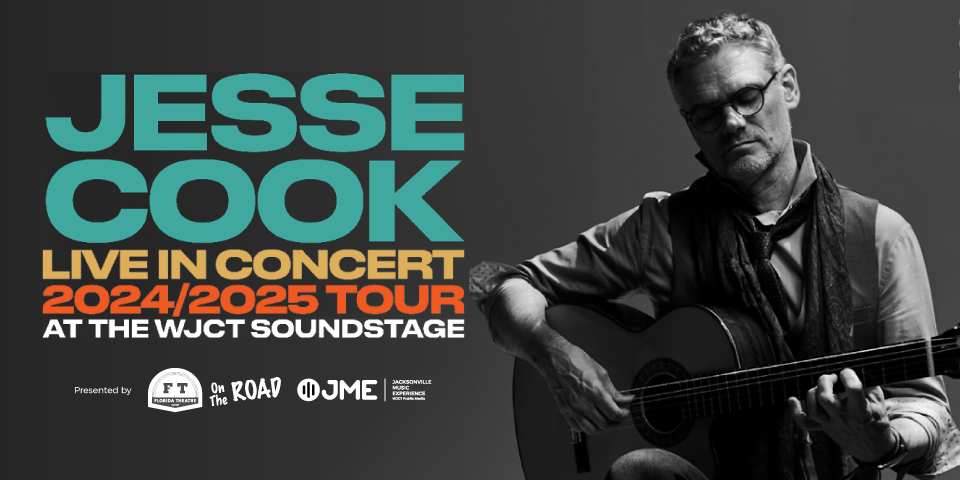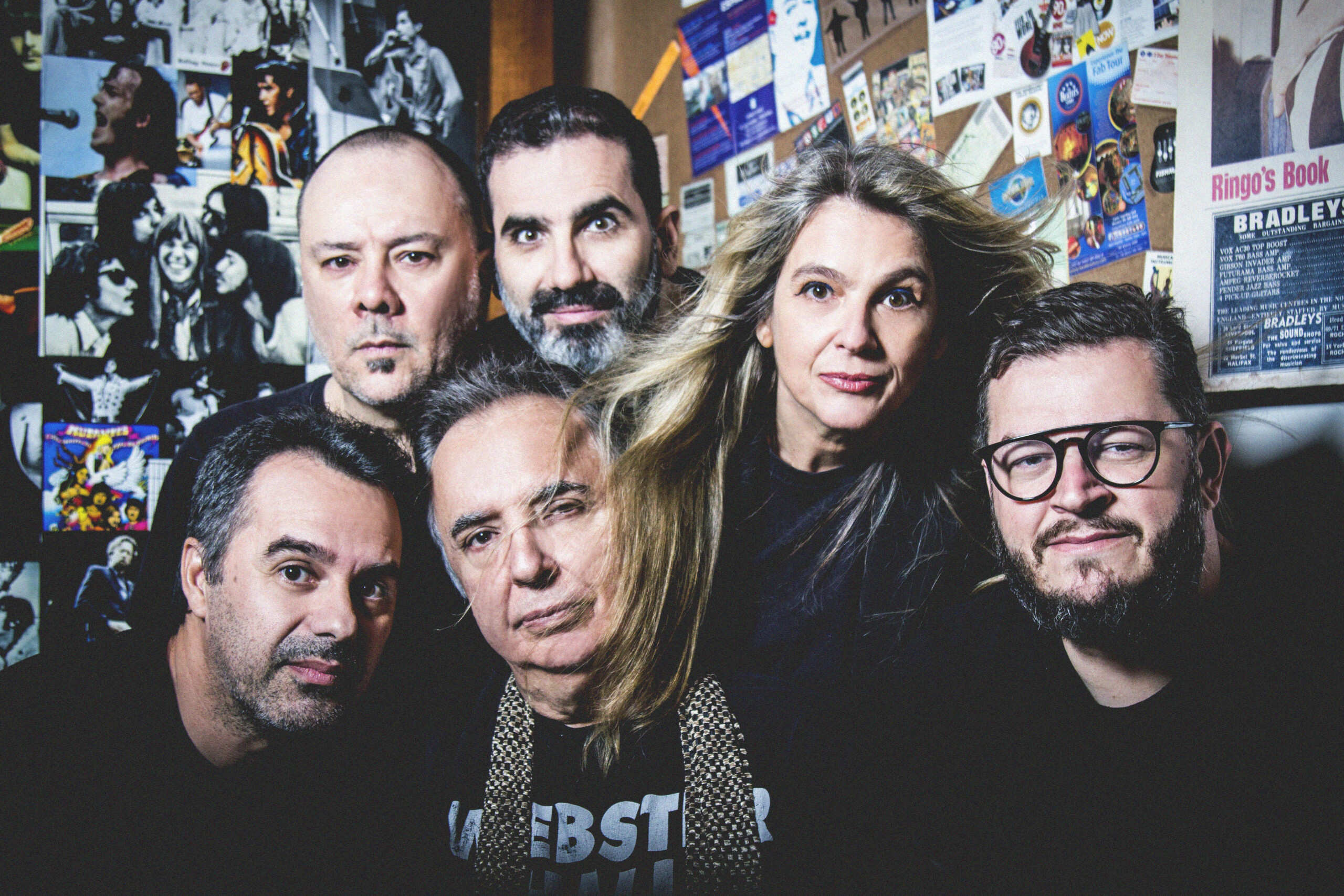
When Os Mutantes perform at Winterland V, the free, two-day music festival in downtown Jacksonville on Sunday, February 26, the storied band brings a half-century-plus of iconoclastic Brazilian musical history to the local 21st-century stage.
Even in the freak-freely 1960s, Os Mutantes (“The Mutants” in Brazilian Portuguese) were precocious teenagers formed during the decidedly youth-revolt of the Tropicália movement. A radically defiant pushback to the then-dictatorship gripping Brazil, Tropicália was a polyglot of traditional and experimental, running the gamut from poetry and visual arts to filmmaking—yet was ultimately a music-driven revolution. The first wave was ignited in Bahia, by musicians including Gal Costa, Gilberto Gil, Caetano Veloso and Tom Ze, who wove together protest music, pop, psychedelia, and Brazilian and African rhythms into a still-resonant mix.
In 1968, the aforementioned quartet of eclectic players hooked up with the São Paulo-rooted Os Mutantes, and released the compilation Tropicália ou Panis et Circencis. Still a landmark document of 20th-century music, Tropicália featured individual and collaborative tracks by the assembled artists and is acknowledged as the sonic manifesto of Tropicália.
That same year saw the release of Os Mutantes’ eponymous debut, an album that is turns rapturous, trippy to the gills, inscrutable, yet never sounding as predictable or even expired as similar artists working in the then-psychedelic diaspora. The cut “A Minha Menina” is a definitive early Mutantes track: a four-minute jubilation of relentless percussion, Motown-style harmonies, snarling lead vocals and a fuzz guitar that slaps across the whole arrangement like red-hot barbed wire.
The core of the band was formed in 1966 when teens Rita Lee (lead vocals) and brothers Sérgio Dias Baptista (guitar, vocals) and Arnaldo Baptista (bass, keyboards, and vocals) joined forces. When the three met Gil, he pulled them directly into the Tropicália universe.
In the decades since, the band went through personnel changes and creative permutations that leaned heavily into deftly executed (and refreshingly weird) prog-rock.
Considering the innovative energy of the group, it’s no surprise that Os Mutantes never enjoyed immense international success. Yet their albums were celebrated and collected by the global underground music community. Fittingly, in the mid-eighties, L.A. rockers Redd Kross and Pat Fear (White Flag) were the first American musicians to cover an Os Mutantes tune. Kurt Cobain was also a vocal acolyte of the band’s singular style, and David Byrne spearheaded a revival of the band’s work, re-releasing their albums and also issuing archived, dormant material.
In 2009, Sérgio Dias was the last mutant standing when Os Mutantes released Haih or Amortecedor; their first studio album in 25 years. Since then, Dias has continued to release new music and tours with a young, whip-smart group of players who revere the Mutantes sound yet keep the whole vibe fresh enough to steer them clear of mawkish nostalgia.
We spoke to Dias as he readied to once again hit the road. He graciously helped us decipher the band’s wild and wooly story and clued us into how he continues to perform well into his seventh decade.
The Winterland festival you are playing here makes a deliberate effort to curate interesting and left-of-field music. And Os Mutantes are truly an enigmatic band. For someone who has no idea of the band’s music and legacy, how would you describe it now, in 2023?
My God. For example, we had the pandemic, right? And we were ready to release an album when everything, of course, when kaput. So, you know, I stayed like two years without even touching my guitar, doing nothing, just watching TV: Downton Abbey (laughs). The return was an amazing thing, because they were doing a thing in Brazil, which was like a thousand musicians playing together. And so I said, “Oh okay, I’ll go.” So when they announced me, there was like a huge cheer, you know? I didn’t expect that thing. I was scared of it. “What’s that? Where am I?” (Laughs). Because I was, you know, basically in my living room, and then going to this amount of visibility. Then after that, we started doing the tour and everywhere was sold out. And it is a humbling thing because that doesn’t depend only on you and also doesn’t depend on record companies or anything like that. It depends basically only on the music that we did. We had a date in Los Angeles. It sold out so they booked another date; and that sold out, so they booked another date. And that sold out…f*ck! (Laughs).

So are you still surprised [by the band’s legacy]?
I am surprised, definitely. You know, I’m 72 now, and if somebody asked me, “What would I be doing when I would be 72?” Probably, I will say knitting or whatever… playing cards. But it’s amazing. It is really amazing. It was like a huge, huge welcome; this last tour. Really, really amazing. And the people were like really… crazy. (Laughs). It was amazing. So, I’m looking forward for the next things, you know?
It’s an interesting time, too, because Os Mutantes had, for lack of a better word, a rediscovery around the ‘90s. But even for the scene you were from the band had a very unique imprint of psychedelia. And I use that term in the sense that the band was as much musique concrète. On the first song (“Panis et Circenses”) of your debut album the tape machine just stops. You had some really radical moves even for an era of radical bands. Were there specifically any other acid-rock bands that were your guideposts? You were kids! You were teenagers.
We were completely straight then. We didn’t even know about joints or LSD or anything psychedelic. It didn’t exist there. What you see there is basically our natural absurdity, you know? For example, that thing of cutting the power off the record player (on “Panis…”) was so people would think, “Oh, God, the lights are off (laughs) or something like that, you know?”— to provoke something. We used to laugh when the guy would go out of his chair and go look at the record player and it would be still working. [But] there was no sound. So we had all those crazy fantasies and we just did it.
Were you working pretty quickly in the studio? Now if an independent band has a budget of $5,000, they will think they’re the Beatles. But the debut was on Polydor, right? So, it was on a major label?
Yes, Polydor.
Did you have a pretty good budget and timeframe? Or were they [Polydor] more like, “Record this album in two days”?
No, nobody gave us any schedule or anything like that. We were basically very free to do whatever we wanted. So, we did it fast because we were fast. For example, there are two LPS that we did in 45 minutes: which were Tudo foi Feito pelo Sol (1974) and O A e o Z (recorded 1973; released in 1992). Because we were on acid and just arranged the equipment said, “Okay: 1-2-3-4,” from top to bottom. Not even half of a mistake and the engineer just couldn’t believe it.
So, you gave him some acid. You went from a natural high to a more “less natural” high. And did two records in under an hour!
Yes.
I want to touch on what was happening there in Brazil and with the Tropicália movement. Its influence permeated music specifically, but it seems like that movement happened quickly as much as due to government oppression. But it was also so multifaceted: you had poets, you had film, etc. Could you talk a bit about that? It seems like it was almost like this spontaneous art [movement].
Yes, and what freaked me out is that this basically happened in a vortex of energy in the entire world without the internet, without anything. For example, I didn’t know that Woodstock was happening! Otherwise, I would have gone. But you know, we were doing things in Brazil. In England, they were doing their stuff and the U.S., also. For example, if you think of the [1967] Monterey festival: what was born there? Jimi Hendrix, Janis Joplin and Ravi Shankar. Ravi Shankar destroyed and blew everybody’s mind. And nobody was expecting or nobody knows what was put together. The Beatles were kings, then. But they were, how can I say, maybe more organized in terms of… England’s a small country. And so maybe it was easier for them to control or do whatever they decided. I mean, Brian Epstein was a genius. But, for example, the Woodstock Festival was such a spontaneous thing and the same was with our movement: the tropicalism. When we met Caetano [Velōso] and we decided to play, it became something completely different: because we had all the technique, all the engineering, all the know-how, and we were superb. There was a superb musicianship in Os Mutantes.
Absolutely.
And all the critics who would say something about the movement, they had always to bow to us, because f*ck—we were good. Nobody expected that thing. Neither did we. You know? When Gil did “Domingo no Parque”, when we played the first time, he had a kind of a panic attack, and he was not going to present his song after he was declared the winner. [“Domingo” won second place at the 1967 III Festival of Música Popular Brasileira, which was broadcast on live Brazilian TV.]
“We did it fast because we were fast. For example, there are two LPS that we did in 45 minutes: which were Tudo foi Feito pelo Sol (1974) and O A e o Z (recorded 1973; released in 1992). Because we were on acid and just arranged the equipment said, ‘Okay: 1-2-3-4,’ from top to bottom. Not even half of a mistake and the engineer just couldn’t believe it.”
So if you see like, for example, in the videotape you see the announcer saying, “Oh, we’re gonna hear ‘Domingo no Parque’ with Os Mutantes. Ah, no, Gilberto Gil is here so he’s going to sing.” We were ready to just get the ball and kick it. I mean, I don’t think Gil was expecting that. And this was like, an extremely powerful thing. And all the things that happened during this period were like, for example, if I think “When did we go to France? Oh, 1967. And when did we record [Os Mutantes’ 1970 release] Tecnicolor in France? 1968. When did we do ‘É Proibido Proibir’? In 1968. It’s amazing, the density of writing.
Could you tell me a bit about your creative relationship with Gilberto Gil? Do you feel like there was a mentorship or even brotherly-type energy between the two of you? Was he protective of Os Mutantes? He and Caetano Velōso are invariably viewed as the Bob Dylan or John Lennon figures of Tropicalia. So were you the Jefferson Airplane of the scene? I say out of respect that Os Mutantes were this innately freaky band. Were the elders protective of you, as if you were this rare delicate bird flying around?
Well, you know we really weren’t delicate. We were hooligans.
Well, I mean worth cultivating. Not “delicate” as in fragile but more in the sense of being singular.
We would put “more wood in the fire,” if you know what I mean. And we just let it burn. You know: us, Gil, Caetano… there was no limit. There was no “protection” or anything like that. I mean, we were like equals—and that’s funny because I was 16. And Gil was like twenty-something. So, it was an amazing situation where they, for example, they respected us in the same level that they would respect other artists. And they knew we were solid, and how can I say…free fish.
Yeah, well you were players. You could play with a kind of prodigy-level playing.
Yeah, and not only that but the vocals were great, the arrangements were outstanding. It was something that is beyond my comprehension because nobody was doing anything close to that at the time.
I’m more familiar with some Chilean acid-rock bands like Aguaturbia or Traffic Sound than Tropicalia bands but those two bands were more like Cream or heavy rock. But was there any kind of continental rock sound in South America at that time?
No. But first you have to imagine: the only place that we played so far in South America was Chile, and then Mexico, which is out of South America. We never went to Argentina, we never went to Bogota, or to any place like that. And it was, I mean, there’s a huge barrier between South America and Brazil maybe because of the size of Brazil, maybe because of the language because we’re not Spaniards. I don’t know why there’s this disconnection between our countries.
I want to also touch on your guitar sound and guitar. In the ‘60s, Lou Reed with the Velvet Underground, he had this really bizarre “Frankenstein” Gretsch guitar he had modified that was almost unplayable with like seven fuzz tones. And maybe someone like Frank Zappa or Jack Casady from Jefferson Airplane; they used heavily modified guitars. But, correct me if I’m wrong, early on you played a kind of a custom guitar.
Yeah, my brother [Cláudio César Dias Baptista] used to build everything. It was like a lot of things; a lot of this came from our collaboration, myself and him. Because when Mutantes started we became like a trio, right? So I ended up with the harmonies and solos and singing, and all at the same time. So I would come to my brother say, “What do I do? There’s no time for me to tweak the knobs because I am singing at the same time.” So, he put everything inside the instrument, all the effects. And for example, I said “Well, I cannot change guitars to an acoustic guitar.” First of all, there was no electric-acoustic guitar back then. Then he would come and get a pickup capsule, you know, like, I called it “a record player capsule.” And he put the needle right on the bridge. And voila! We had a piezo [pickup]! That was like 20 years before Ovation guitars.
Who were your main instrumental influences on the guitar? You had a really searing kind of guitar sound that quite frankly hasn’t softened over the years. I mean, your solos at age 70 are as intense as they were at age 16. Who were the guitar players that you were into?
Well, my cornerstone in terms of music is basically classic; that my mother was a fantastic pianist. And guitar wise it was basically the Ventures: was learning every note, you know, put the record in 16 RPM. And getting every note by note and learning. I used to be permitted to keep playing like, for 12 hours a day. And there was only that in my life. I mean, I became who I am in terms of music, because of a self-taught situation. Because there were no teachers, there was no strings, there was no picks, there were no guitars, etc. So, if we didn’t do everything, we wouldn’t have anything. I mean, we couldn’t just go next door and buy a Fender Stratocaster. And so my brother started building [Sérgio’s guitar]: he is a genius.
Yeah, they still sound phenomenal. I’m interested, in this sense of legacy, because you create new music, and you have these new and very accomplished players. But do you ever get frustrated with audiences expecting you to essentially recreate what they are familiar with from 1968—and not your present day music? Does that ever feel like a hindrance?
No. When we got together, in 2006, I said, “The only thing I want is basically, if we’re going to get together, we’re going to make a new album.” Because I don’t believe in “dead bands”: train this, this all the time on the same songs. So we did already three full albums or whatever. And they were very well accepted. And we play the songs live, I mean, is not only like, memorabilia, or just go and play an entire show of only the [older songs] that we did. It’s amazing because, for example, there’s a kind of idea of, “How do you set up a setlist for the show,” right? Normally with the hits in the end: we already did them, we shuffled the [setlist], any way that you can imagine. And it’s always that same amount of power that it is. It doesn’t matter which song we start the show with. For example, if we start with a very soft song or a strong song…I don’t know what’s happening, man, there’s a magic on this thing. That is a magic and I’m damn lucky and blessed to be part of this. There was a couple that came here two days ago and we were having dinner and the guys you know; they always praise me.
“You can die anytime: you can die tomorrow. But you have to always give your best because they deserve that.”
I feel like a rare animal, you know? (Laughs). And that kind of bugs me because I know I’m nothing else but a guitar player. I just do my own thing. And it’s funny, you know, because I don’t feel special, or that I’m doing like some enormity of discovery, music-wise, you know? But I can only be thankful for all the support that I have always had. But it amazes me, really.
Right on. You’ve got about, I think 18 to 20 concerts coming up in February, including when you come here to play Jacksonville. I don’t know if this is kind of a “canned question,” but you do have any kind of any wisdom for younger players? Because you’re still playing at a high level, you survived a lot of the cliché-but-true occupational hazards of being a musician for 60 years.
Well, for example, last tour I had Covid, I had influenza, and all of this. I fell and I hurt my knee…
Jesus.
You know, in the end is, “F*ck it.” It’s so much better than to say, “Oh, poor me. I’m sick.” No, you have to go and play! First of all, there is the audience: you owe them this. The crowd is there, they bought the tickets, they support you. I mean, it’s the minimum. Unless you’re like hospitalized—which happened to me once because I had septicemia because of a prostate probe. And then I had to cancel a show in Brazil, but then like 15 days later I was in New York playing with a center-line into my heart with four antibiotics. But I played the hell out of it, and it was great (laughs). You can die anytime: you can die tomorrow. But you have to always give your best because they deserve that.
Os Mutantes perform at the Winterland Festival at 9 p.m. on Sunday, February 26 at the Riverfront Plaza in downtown Jacksonville. The festival is free and VIP packages are available. For full festival lineup and for more info, visit here.
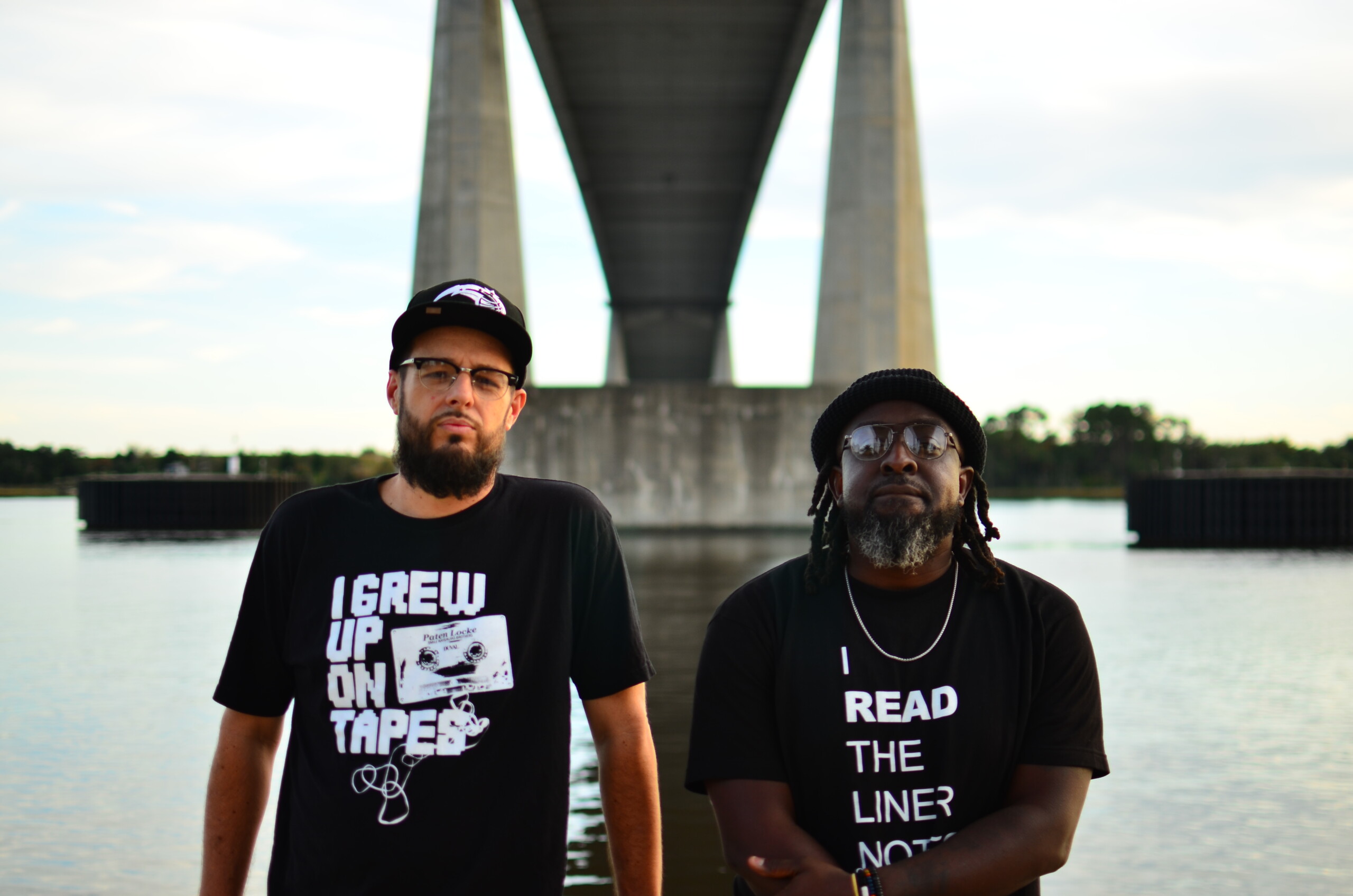
Mr. Al Pete and Notsucal Release Their Latest Collab, ‘G4.5’
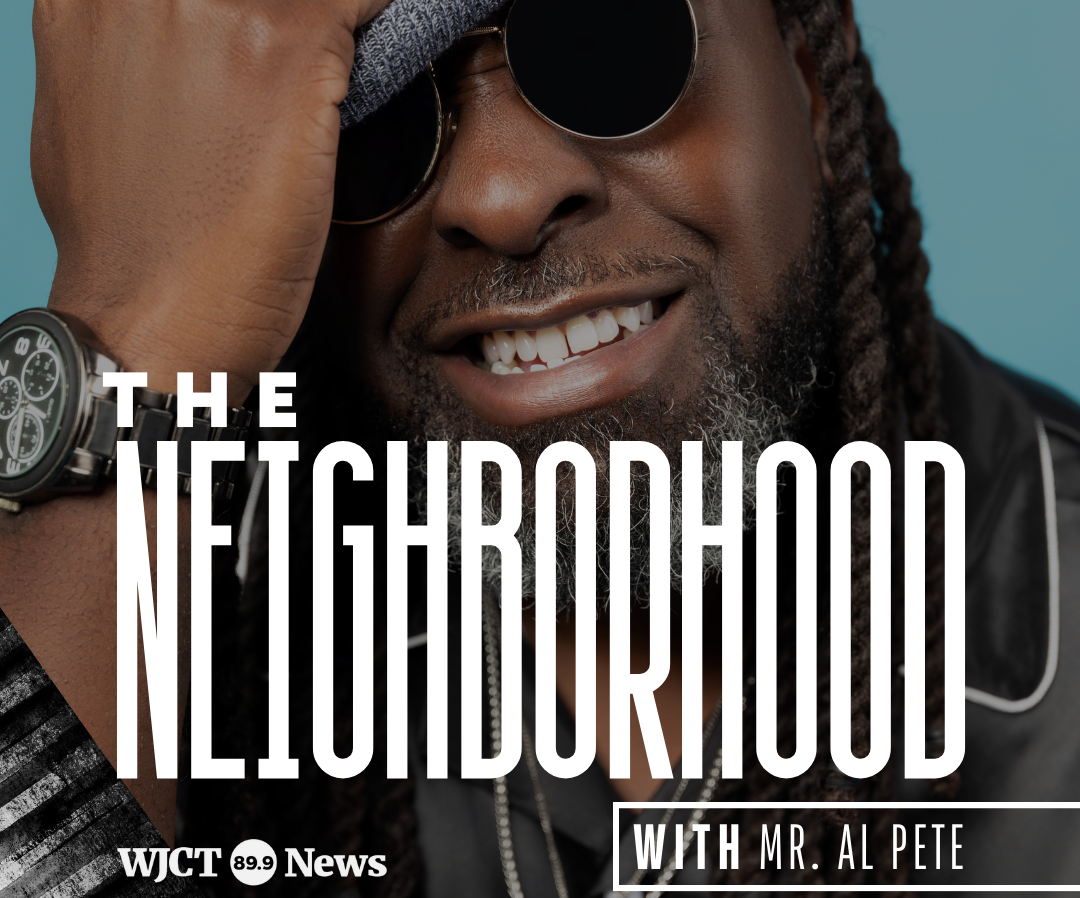
Dinner Party, Tom Misch and More from the Neighborhood with Mr. Al Pete
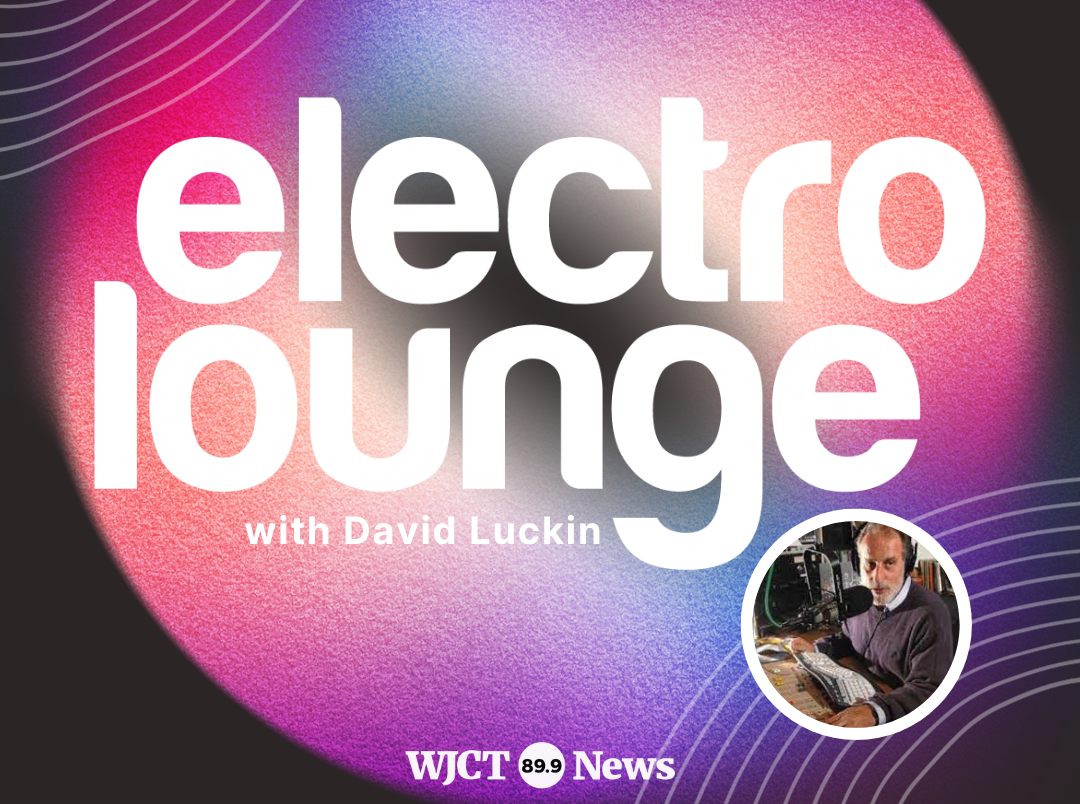
An Ultra-Chill Playlist from the Latest Episode of Electro Lounge
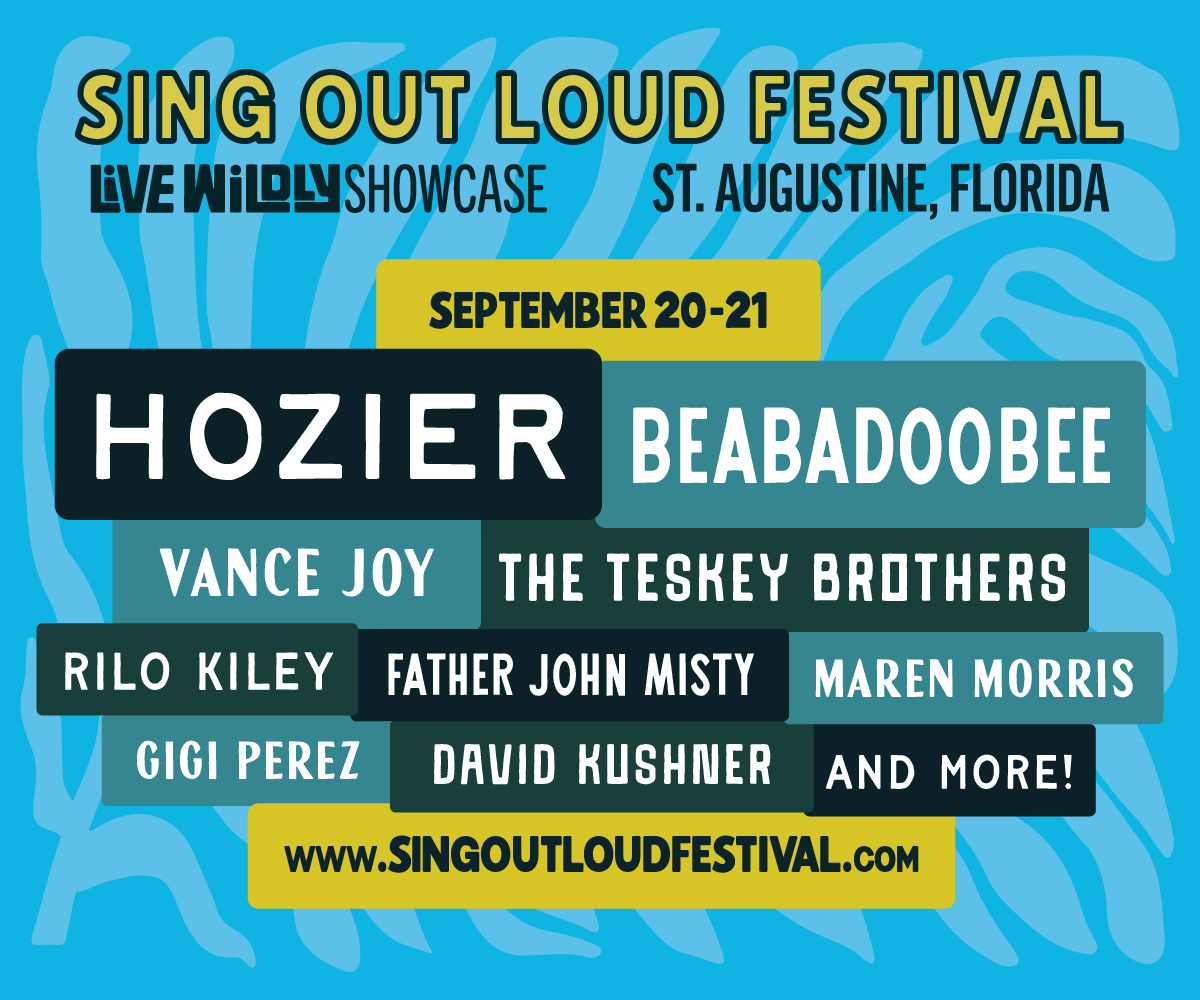
Sing Out Loud Festival Returns With Hozier, Beabadoobee, Father John Misty, Vance Joy and More
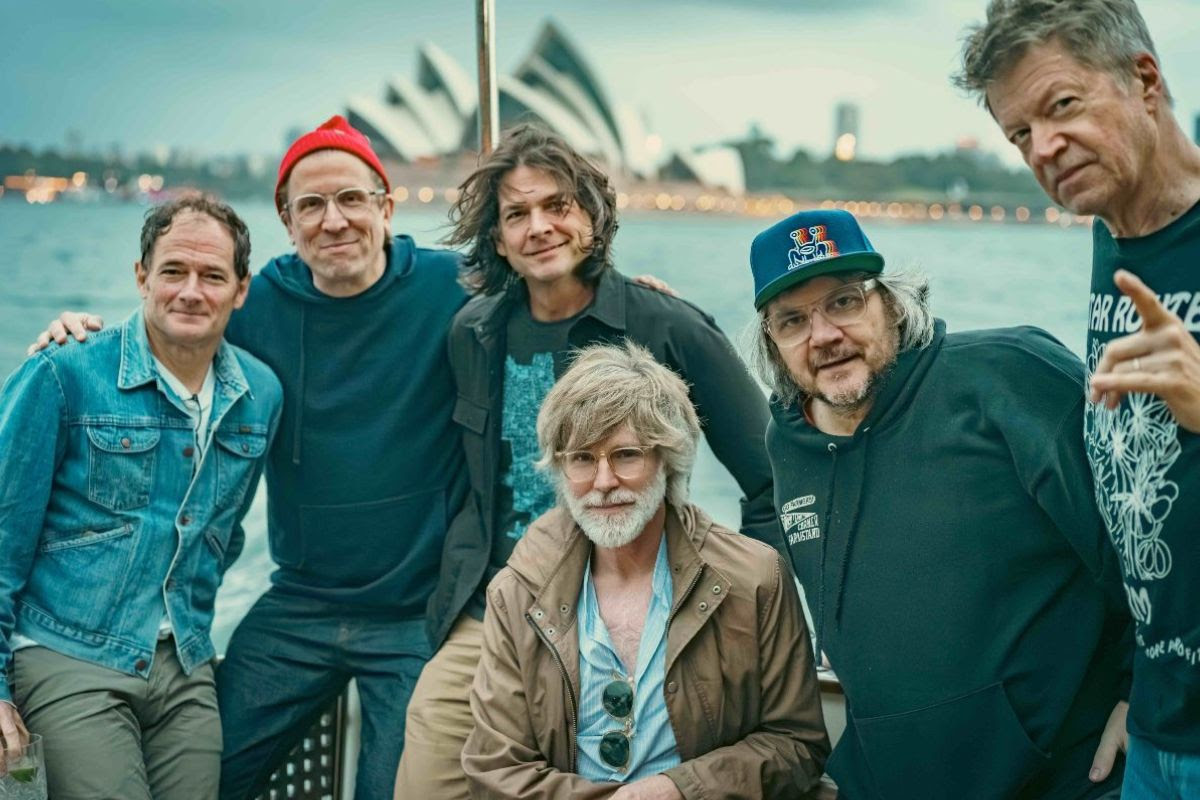
Chicago Alt-Country Faves Wilco Return to St. Augustine with Indie-Folk Great Waxahatchee

Looking for an Alternative to Spotify? Consider Hopping on the band(camp) Wagon
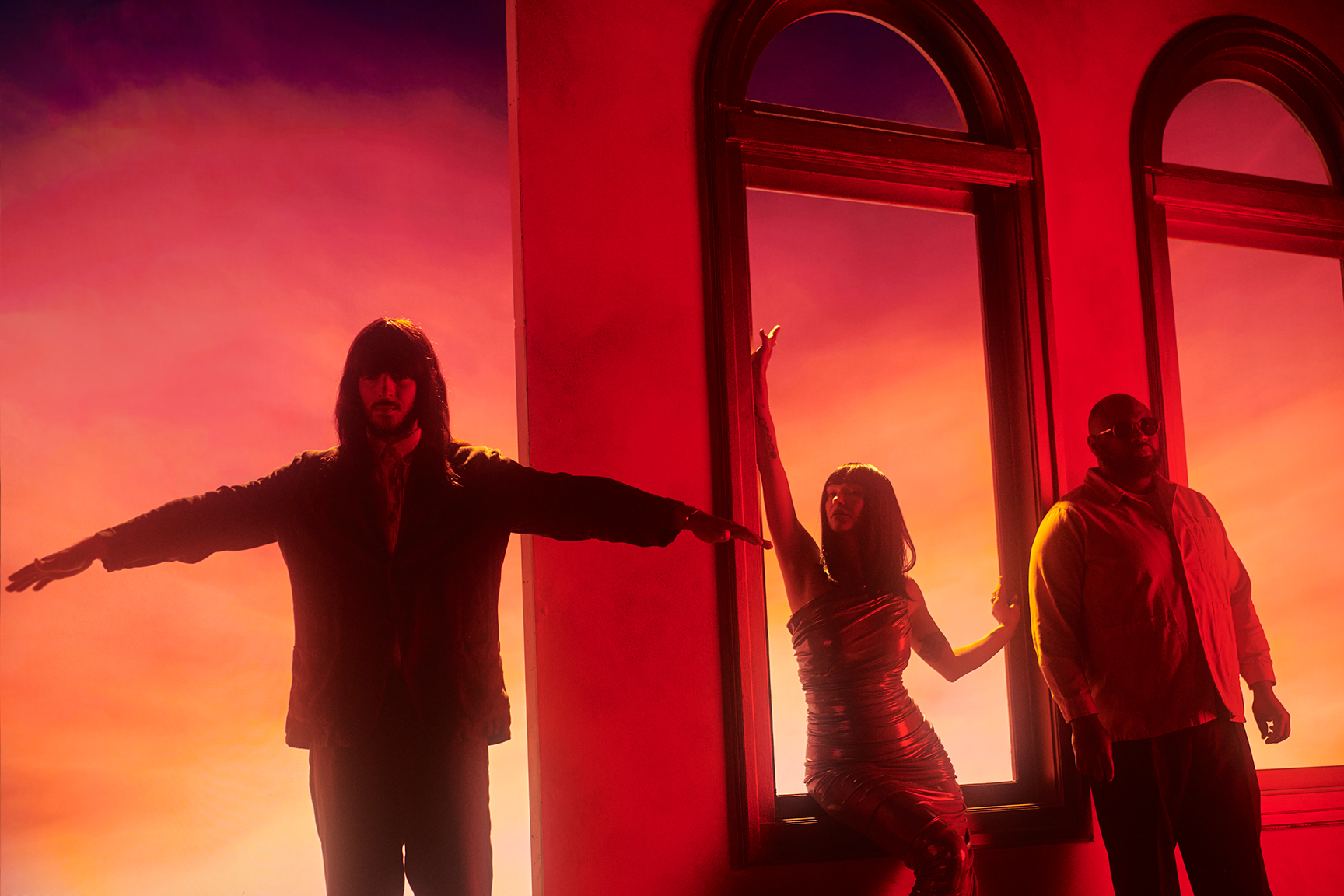
Khruangbin to Bring ‘A LA SALA’ Tour to St. Augustine in April

Perfume Genius, Flipturn, Tamino + Mitski and 6 New Songs to Stream
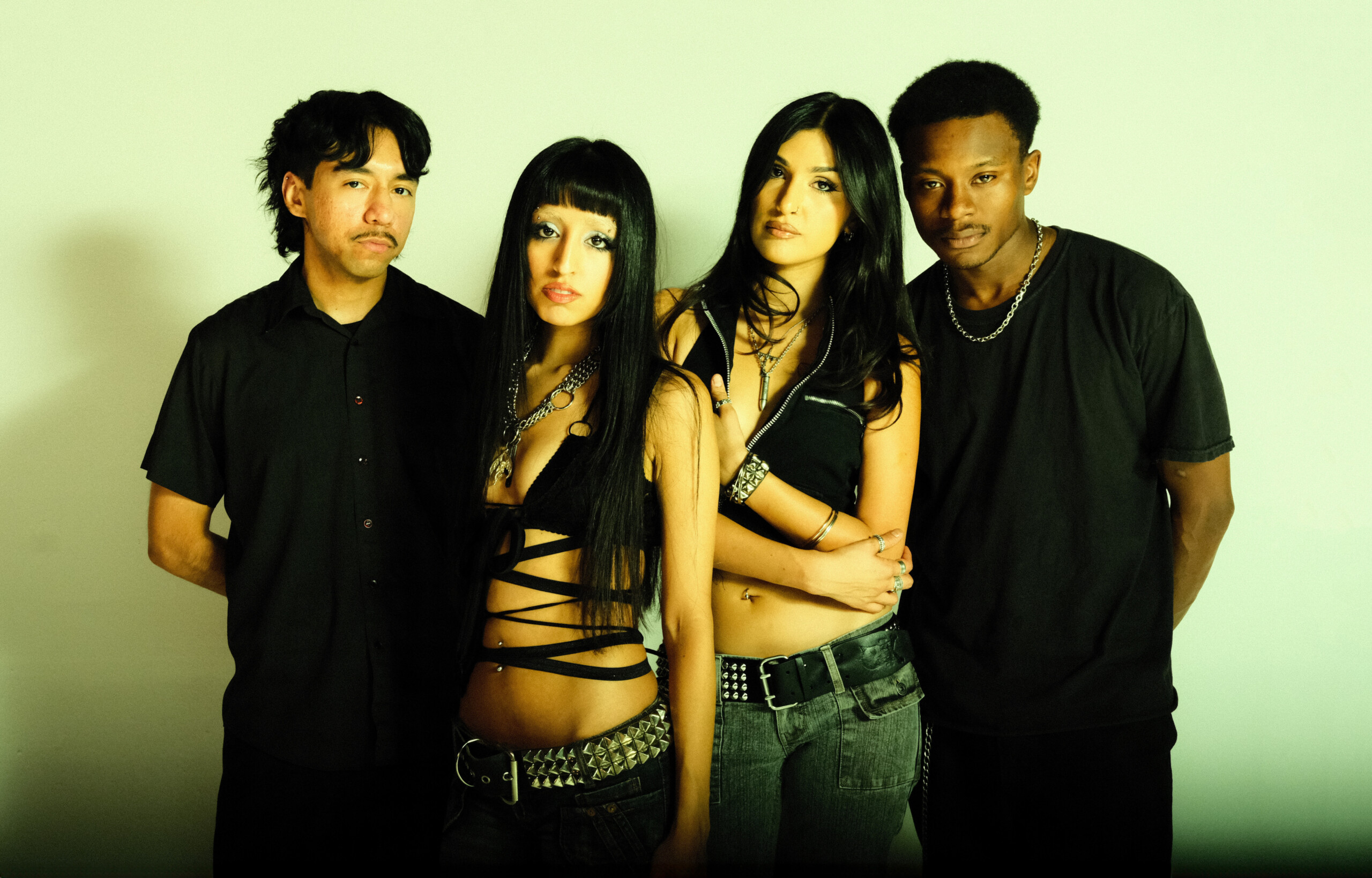
Song of the Day | “all tied up” by Glixen




